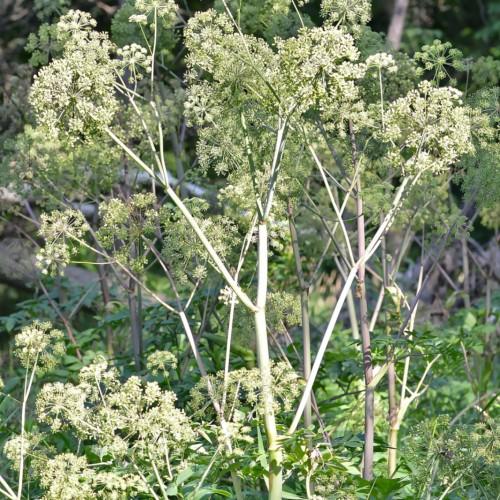
Hairy Angelica
Angelica venenosa
Watering:
Frequent
Hardiness Zone:
Sun:
full sun,part shade
Fruits:
Fruits Ready In Summer
Leaf:
Yes
Growth Rate:
Low
Poisonous To Pets:
Yes
Drought Tolerant:
Yes
Salt Tolerant:
Yes
Thorny:
Yes
Invasive:
Yes
Care Level:
Medium
watering
Small-Leaved Angelica (Angelica pinnata) should be kept moderately moist in well-drained soil, and watered whenever the top inch of soil is dry. Water with room temperature water to provide a light and even moisture for the plants, usually about once a week depending on light and temperature. Do not let the soil completely dry out, as this will cause the plant to become stressed, but do not overwater either as this can cause root-rot. During the summer months, you can supplement with occasional misting, but avoid misting the foliage directly since it's a magnet for fungal diseases.
sunlight
Small-Leaved Angelica (Angelica pinnata) prefers light shade to direct sunlight. It should be planted in a place that gets some morning sun and filtered or afternoon shade. This amount of sunlight will help the plant grow strong and prevent sunburn. The ideal time for this species to receive the most sunlight would be for 4 to 6 hours per day with even lighting from sunrise to mid-afternoon. Make sure that plant does not get too much direct light during the hottest parts of the day. If needed, provide some sun shade during the hottest part of the day.
pruning
Small-Leaved Angelica should only be pruned once a year at the end of winter. Start by removing any dead or damaged branches, as well as any branches that are growing too far away from the main structure. Try to avoid removing more than 25 percent of the plant, as this could cause damage to the remaining branches. Make the cuts as close to the base of the plant as possible without damaging the surrounding foliage. After the initial pruning, continue to regular prune the plant throughout the growing season to ensure maximum health and shape. Remove any wild shoots that begin to appear and trim any large branches that are growing too big and taking over.
